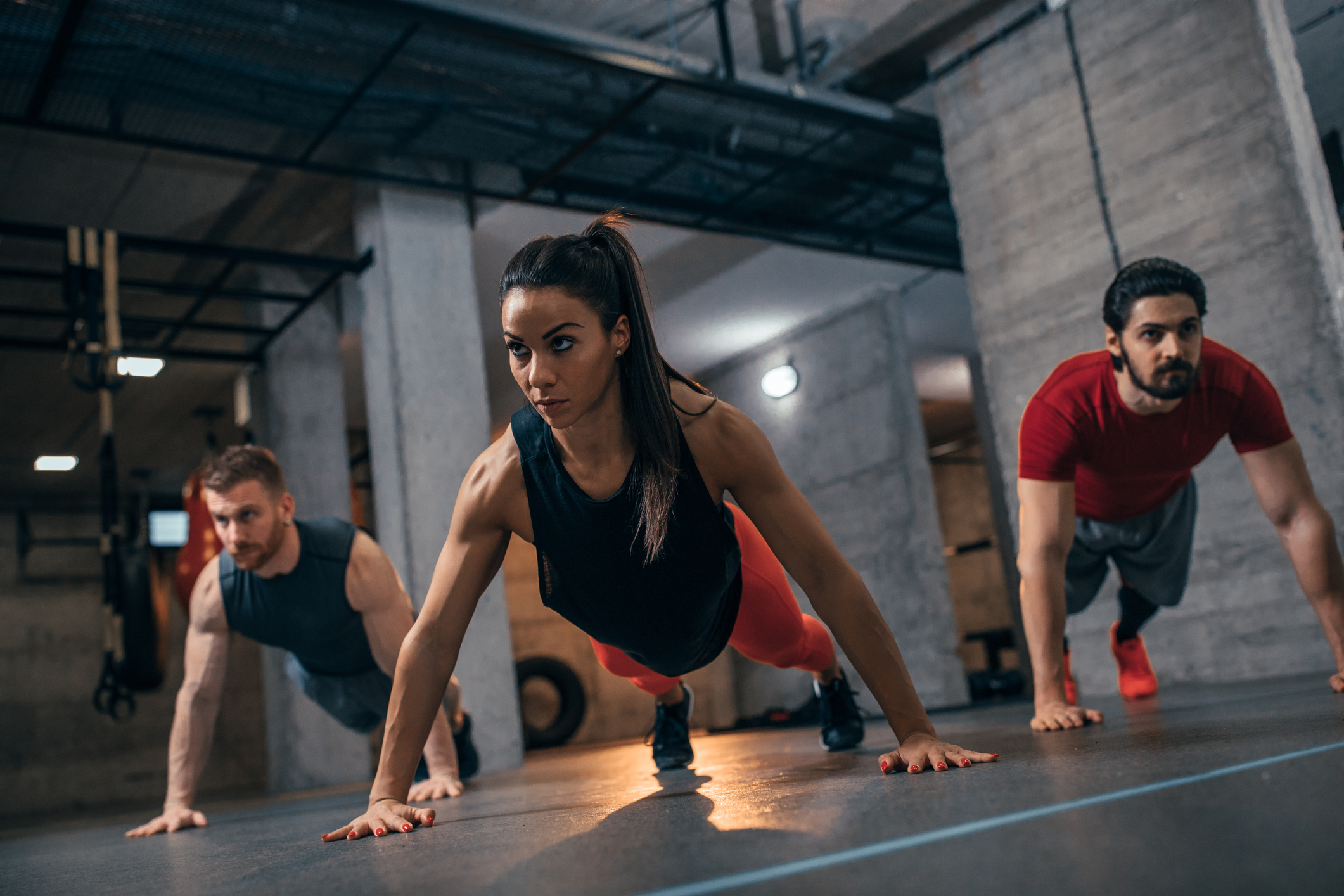Paul Edmondson invites us to take the blue pill and discover there is more to training than traditionally meets the eye.
Once upon a time, in a land far, far away, Morpheus (Captain of the Nebuchadnezzar) sat Neo (a curious computer programmer in search of the ‘truth’ behind the ‘matrix’) down and offered him a choice: to stay and accept the world as we know it (to take the blue pill, wake up and all will have been a dream) or to take the red pill and open his eyes/mind to the truth of the world and ‘enter the matrix’.
This sets the scene for this article: either take the blue pill and accept current training the way tradition has conditioned us to, or take the red pill and see there is more to training than just traditional means and unveil the realities of the human body, its function, its necessities and how life and sport truly are, so that exercise can ‘map’ these requirements more succinctly.
Before we dive into the exercises and their multi-faceted benefits, let’s first define what, in our terms, a ‘matrix’ is. In 1970-something, Dr Gary Gray (father of function and CEO of Gray Institute) formulated the concept of a ‘matrix’, which is now being used by movement professionals in our industry. Gary describes the matrix as “a logical sequencing of movements, within a movement, that factor in all three planes of motion simultaneously” so as not to miss anything and train everything.
A matrix can be utilised in any movement, exercise or task with the intention of assessment, training and rehabilitation, and the rationale behind it should really ‘hit home’ both the intent behind the why and the power behind the why.
Benefits include but are not limited to:
- Variability within specificity. This sounds oxymoronic to say because of the conflicting definitions, but we all know the SAID principle (specific adaptation to imposed demands) and how we must plan and implement ‘stressors’ that mimic our life/sport requirements. Can’t argue with that. But, in the same breath, life/sport is inherently variable, from different terrains and movements to different vectors, loads, speeds, drivers of motion and stressors from task to task in the same sport/activity of daily living. Therefore, to be adaptable, successful and unbreakable, we must programme variation within training and movement mastery.
- Biological variability. If we think a standard push, pull, squat, lunge, etc. that has the same movement variables every time is going to equate to health and fitness, we are wrong. While we can utilise these movements and push the envelope of programming variables to elicit muscular and metabolic ‘gains’, this ‘fitness increase’ directly detracts from health. Take the joints, myofascial and neural elements of the body – without variable ‘inputs’ along different angulations, variable vectors, different speeds, ranges, heights and distances, the joints will decay (become osteoarthritic – ONLY variable movement can prevent this inevitability). Myofascial tissue will degrade, become plastic and dehydrated (drinking two to three litres of water a day will never hydrate tissues; you must squeeze and pump it there, which only happens in 3D matrix movements) and be devoid of tensile strength along all lines of tissue, instead of being fully elastic, well hydrated and unbreakably strong in all positions. Neural functions and connections are enhanced through variable, new and novel training methods – once proficiency is mastered, the ‘brain’ no longer listens, learns or adapts further. In fact, it becomes incredibly disinterested.
- You can use the matrix movements first to see and feel where you function well, where your individual successes are and in which positions and planes of motion you need ‘work’ – be that from a mobility, stability and/or strength standpoint (individual limitations that can be sought, trained and enhanced specific to said individual).
- Movement helps counteract inflammation, ‘pumping’ nutrients to ALL tissues to guide healing. Over time, they can be loaded to increase load-bearing capacity in tissues that were injured, thus building a resilient and robust rehab programme specific to the damage, healing time and limitations of the client that, once appreciated, met and logically progressed, can ensure they come back strong for the game of life, gym and sport.
- Why squat only one predetermined way, when you can squat a thousand different ways? Literally thousands. Thousands of movement variables (driver, speed, beginning position, angulation of driver, range and many more) can be introduced, meaning the exercise can always feel fun, specific and within the threshold of your success, side stepping plateaus and stagnation because, rather than just focusing on the programme variables and manipulating only these, you can go down so many routes with a fully robust internal (joint, muscle, skin, fascia, etc.) and external (pattern, load, demand of game/sport) focus.
- Bridging the gap. There is still a gap in training where components of fitness are unnecessarily segmented – namely mobility, stability and strength. Mobility is stretching focused, while stability training is static or balance focused, and strength training is heavy load and typically in one plane of motion. Life/sport requires mobility (space and range in joints/tissues in all directions), stability (controlling the range of motion we have) and strength (load-bearing capabilities at these positions/motions) – all at the same time in many situations – which we must appreciate, combining all these elements and programming in ‘odd position strength’ for structural and functional purpose.
As previously mentioned, we can use a matrix in any/all exercise/movement for an intended purpose. To start the ball rolling and allow you to see/feel the relevance of executing exercise in this way, I’ve picked six movement patterns to showcase how simple it is to sprinkle in a little matrix magic for effective gain.
Matrix 1 – Squat
This is defined as taking the pelvis towards the ground, to translate the pelvis vertically. There is no rule that dictates foot position or position against gravity (beginning position). Therefore, we have autonomy to manipulate many things in a squat to challenge the body differently, regress challenge to a particular tissue, mimic specific activity/goal of a client or build variety and fun. My offering manipulates beginning position and, rather than execute all repetitions with feet side by side (neutral), I change my footprint after each rep by going left foot forward, then right foot forward (sagittal plane tweak), wide and narrow to bring alive frontal plane elements within the body and toe-in and toe-out beginning positions to train the all-powerful transverse plane (where we have the most potential in the human body but, unfortunately, where most injuries occur because we don’t train). Then, I mix and match combinations of these to gift 27 possible symmetrical squats to your mobility, stability and strength pursuits that have positive outcomes from the ground up through the feet, to the hips and up into the spine by virtue of chain reaction connectedness of our bodies.
Matrix 2 – Lunge
Defined as a step and return anywhere in three-dimensional space. Typically, we see forward/backward lunges in the gym (sagittal bias). This offering explores six angulations in three planes of motion to emphasise everything our hips can do from a mobility/stability/strength standpoint. This will inevitably feed up/down the entire body, so everything in our body reaps the benefit.
Matrix 3 – Plank
Defined as holding and controlling, or resisting, motions in any/all planes of motion. Typically, we see a holding variation that, while it may be a good entry point, doesn’t take into consideration that the core job in life/sport is to contribute towards moving in all three planes of motion. This plank has three layers of progression, each with all three planes of motion factored in: firstly, using the hip as a driver (body part that triggers motion to occur), then the foot/leg as a progressive challenge and finally the hand as the toughest progression. Remember these can be regressed by bringing the ground up to the person (box) or even performed vertically, standing against a wall and then progressing angle of body against gravity over time.
Matrix 4 – Overhead press
This not only becomes a beneficial exercise for shoulder health and performance, but also trickles down and benefits the scapula, spine, hips and feet/ankles in all three planes of motion.
Matrix 5 – Press-up
The good ol’ push-up tweaked, using beginning hand positions that amplify sagittal plane, then frontal plane, followed by transverse plane inputs, and finally using combinations of all the above to feed many variations to the shoulder joint for strength in many positions that enable it to be stronger for whatever life may throw at it in the future.
Matrix 6 – ViPR swing matrix
The swing is a great exercise that seriously trains grip strength with the utilisation of the long lever arm above the two hands on the end of the ViPR tube as it swings, but also it’s a fantastic way to train our body to capture and harness momentum, which is how we move ‘efficiently’ in life/sport. When we use momentum (gym training persists to limit or inhibit momentum to train muscles exclusively with ‘time-under-tension’ which is great for muscle hypertrophy training), we allow the body an opportunity to lengthen tissue before we shorten or contract tissue. This pre-stretch strategy allows the fibrous connective tissues like skin, fascia, ligaments and tendons to store elastic potential energy (like a rubber band), then it releases this energy to drive us into the intended ‘task’ or ‘movement’. Think of throwing a ball forwards; you go backwards first – why? To load and explode as above. This strategy is energy/movement for FREE. Muscle requires ATP (energy) and the body wants to conserve energy outside the four walls of a gym. Here we allow the body an opportunity to harness momentum in all three planes of motion, allowing an opportunity to train effective/efficient motion for all life/sport must throw at us.
These matrices and the wisdom behind them are brought to you by Gray Institute. Check them out at www.grayinstitute.com or, for online and live course offerings, email pedmondson@grayinstitute.com
Author Bio:

Paul Edmondson is a dedicated leader within the fitness industry, having worked with, and for some of the leading pioneers and biggest brands in the world both nationally and globally. Paul has presented in 24 countries, over 5 continents on behalf of Gray Institute, ViPR, TRX, Anatomy Trains, Trigger Point, SKLZ, institute of Motion and at the IDEA World conference. His thought-provoking sessions are designed to bridge the gap between the traditional and new sciences to better equip trainers to serve their unique and individual clients. Paul takes pride in delivering complex content in a simplified and application specific manner that is perfect for trainers wanting to learn more, and is determined to drive forward those he works with to help them become “better versions of themselves”







